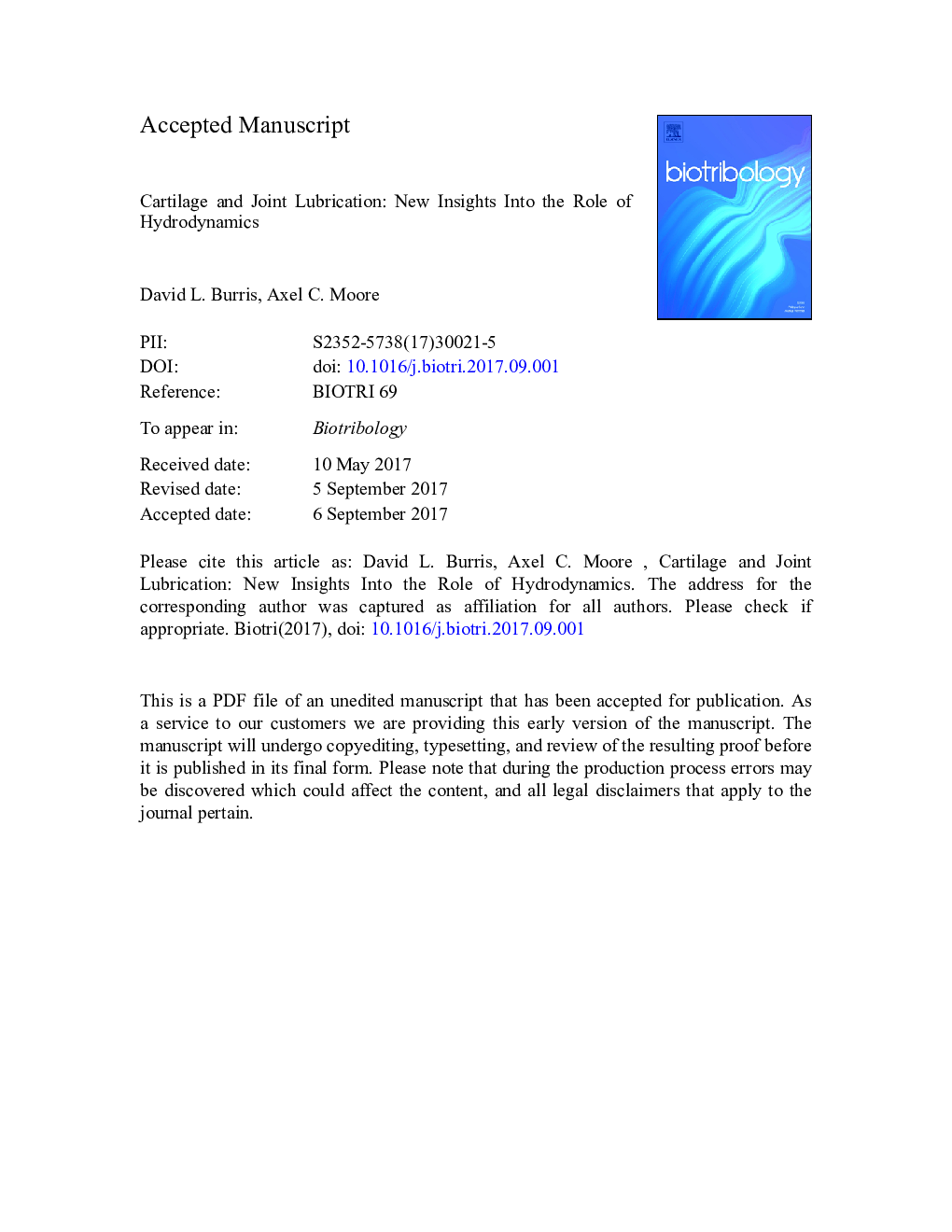| Article ID | Journal | Published Year | Pages | File Type |
|---|---|---|---|---|
| 5011116 | Biotribology | 2017 | 28 Pages |
Abstract
Cartilage is slippery when hydrated but it loses hydration and lubricity during loading. However, dehydrated cartilage regains lubricity during high-speed sliding in the stationary contact area; this result is often interpreted as experimental evidence of fluid film lubrication based on theoretical predictions that pre-equilibrated cartilage remains equilibrated during sliding in this testing configuration. In-situ compression measurements were made during variable speed stationary contact area experiments with fully and partially equilibrated osteochondral cores under saline lubrication to test this prediction. Reduced friction coefficients and compression were observed during high speed sliding, at near-physiological speeds. The results suggest that the marked friction reductions observed during high-speed sliding following equilibration were likely consequences of interstitial fluid recovery, a mechanism we term tribological rehydration, rather than the formation of a hydrodynamic fluid film. The results also suggest that hydrodynamic pressurization was the likely driving force underlying the tribological rehydration phenomenon. We propose that external hydrodynamic pressures in the convergent wedge near the leading edge of contact pushed fluid into the porous surface to restore hydration, thickness, mechanical stiffness, and lubrication following periods of static exudation.
Related Topics
Physical Sciences and Engineering
Engineering
Biomedical Engineering
Authors
David L. Burris, Axel C. Moore,
